Deadly Burmese pythons: Summer means it's time for biologists to crank out necropsies
Ian Easterling reached into the lifeless body of a female Burmese python, grabbed ahold of its lower bowel and plopped the business end into a white square plastic examination bowl.
He squeezed from the head side down, kneading loose the remaining contents of the apex predator's last meal.
"We're going to see what this snake's been up to," Easterling said while shuffling through the lower intestine. "Between 90 and 100% of these eggs would have been laid if this snake had not been caught by scouts. We're trying to get these things before they drop the eggs because frankly once the eggs are dropped it's too late."
Easterling worked the remains toward the bowl, and the snake's digestive remains slowly oozed from its natural packaging to a sterilized tray.
He transferred the python poop to a stainless steel strainer, and fellow Conservancy biologist Ian Bartoszek took the strainer to a nearby sink in the lab to rinse away the loose material and get a better look at the contents.
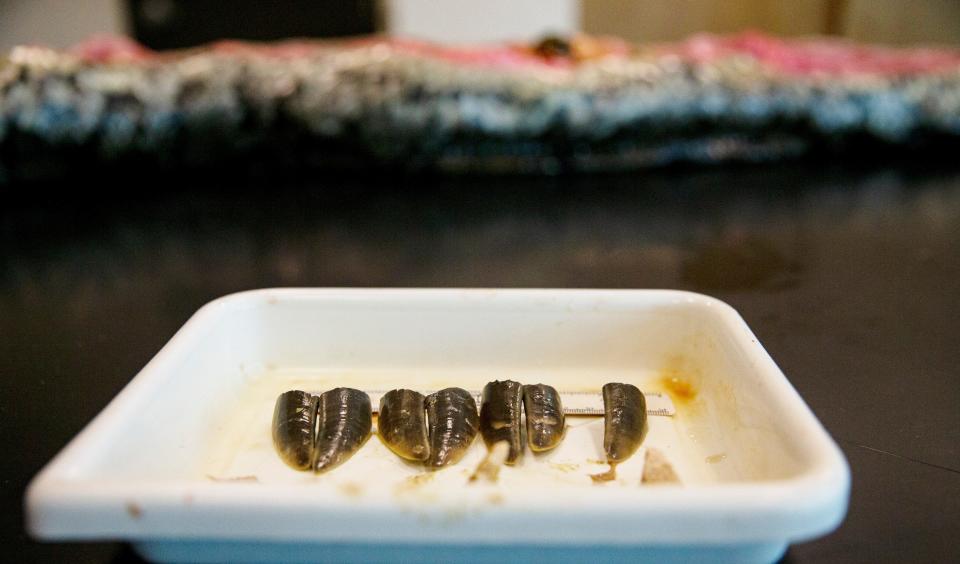
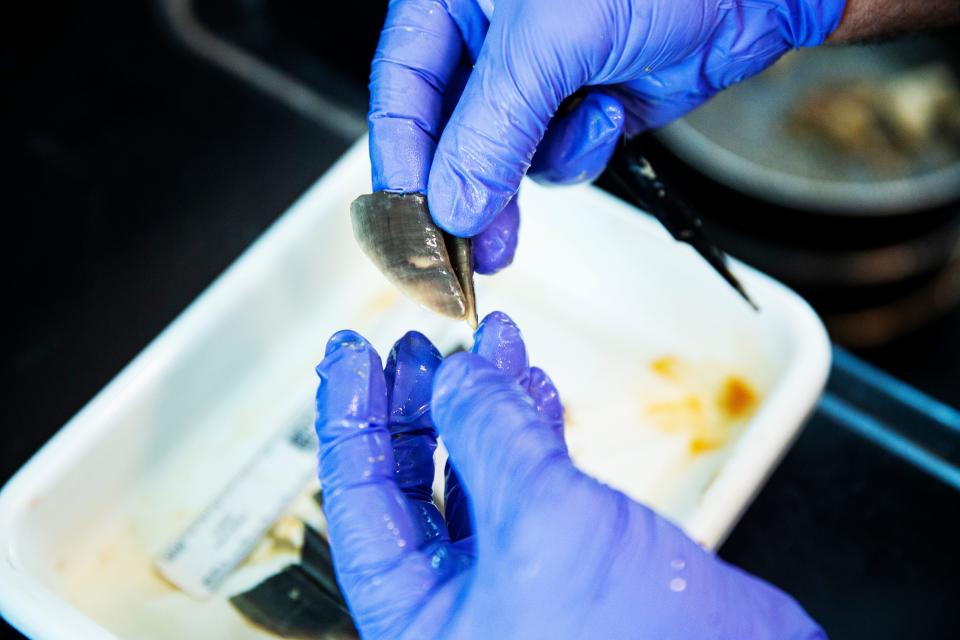
He shifts the strainer under the flowing water, and several triangle-shaped pieces emerge from the smaller debris.
"This snake's last meal was a white-tailed deer," Bartoszek said. "There's almost a complete set of white-tailed deer hoof cores."
So, an invasive snake from Southeast Asia ate a deer. What's the big deal?
Well, deer serve as the main base prey for Florida's iconic and endangered panther population. Their two ranges largely overlap in the area south of Lake Okeechobee.
Female pythons targeted: Scout pythons help scientists battle spread of giant snakes as program passes 10th year
Tips: How you can humanely kill a Burmese python and other big snake tips and pointers
Python hunt 2023: Fish and Wildlife Commission sets Burmese python hunt for 10 days in August; what we know
The deer are native, but the pythons were introduced sometime between the 1970s and 1980s, and a core breeding population soon began to spread from Everglades National Park.
"Likely in some part of the Everglades they've eaten a panther, but it's not come across the lab bench of any of our partners," Bartoszek said during the necropsy. "It's definitely happened."
He continued to wash through the remains, then lined up a set deer hooves. Even the mighty digestive systems of these great predators can't digest materials like hooves and bobcat claws.
"If this was a court of law," Bartoszek said rhetorically, "I'd say guilty as charged."
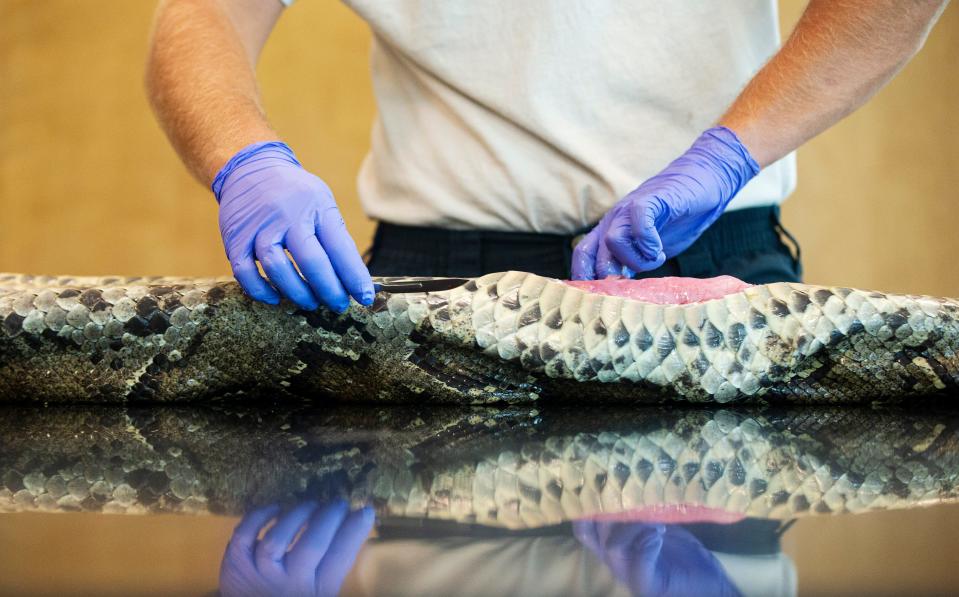
You might think that a 12-foot snake sliced lengthwise through the abdomen would produce some nasty odors. But this snake has been refrigerated, and the lab smells more like a fresh seafood market than and blood-and-guts slaughterhouse.
Necropsy work is common at this time of year at the Conservancy of Southwest Florida.
The tools of the trade are fairly simple: a few sharp scalpels, a couple of notebook pads and pens, the plastic dish and the strainer.
No fancy gear or cutting-edge technology is needed. Even the gear they use to track the snakes in wide open fields and wilderness preserves is more than a century old.
The team tracks and captures snakes between October and April, and the summer months are spent largely slicing up snakes and recording data for the program.
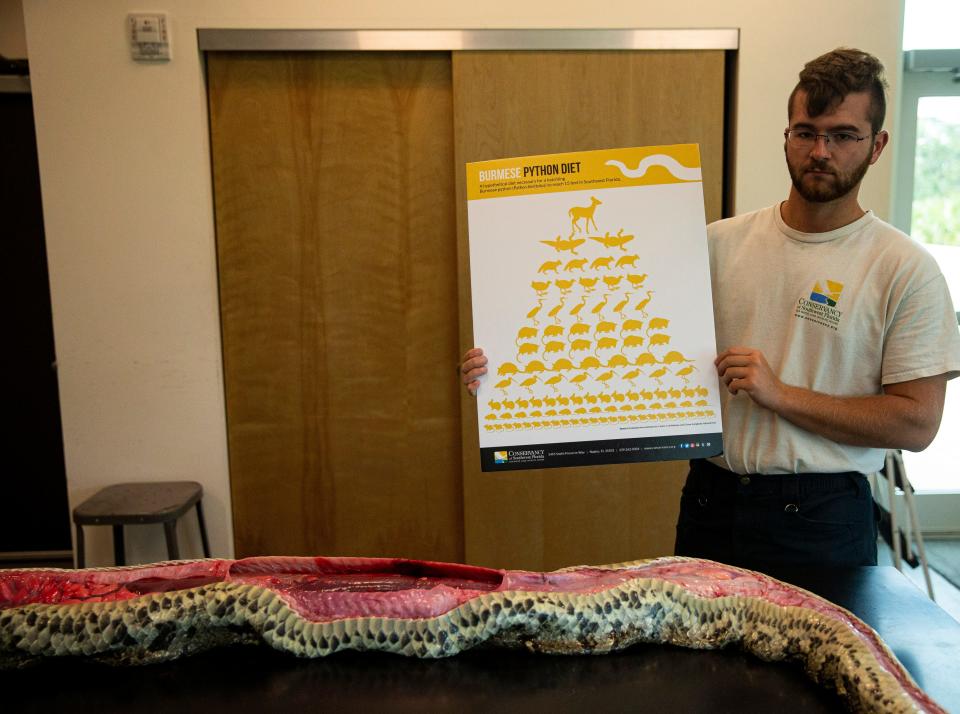
More: Audubon's crested caracara numbers hover around 1,000 in Florida, threatened but stable
More: Most local beaches need sand in the wake of Hurricane Ian. Here's how they are faring
More: Protect yourself: deer flies, horse flies emerging as summer approaches
More: A look at the notorious cottonmouth and the lore that follows this common snake
This is all part of a 10-year Burmese python eradication program that's been going on at the Conservancy for Southwest Florida in Naples, a local non-profit that took on the assignment of controlling or even eradicating Burmese pythons from some preserve areas with high-value habitat.
The introduction of the snake — whether through pet trade or domestic escapes or through deliberate releases — has been complete for decades, and it seems the species will forever be part of South Florida's ecosystem.
The pythons are directly competing with the state animal for food, and they have been for decades.
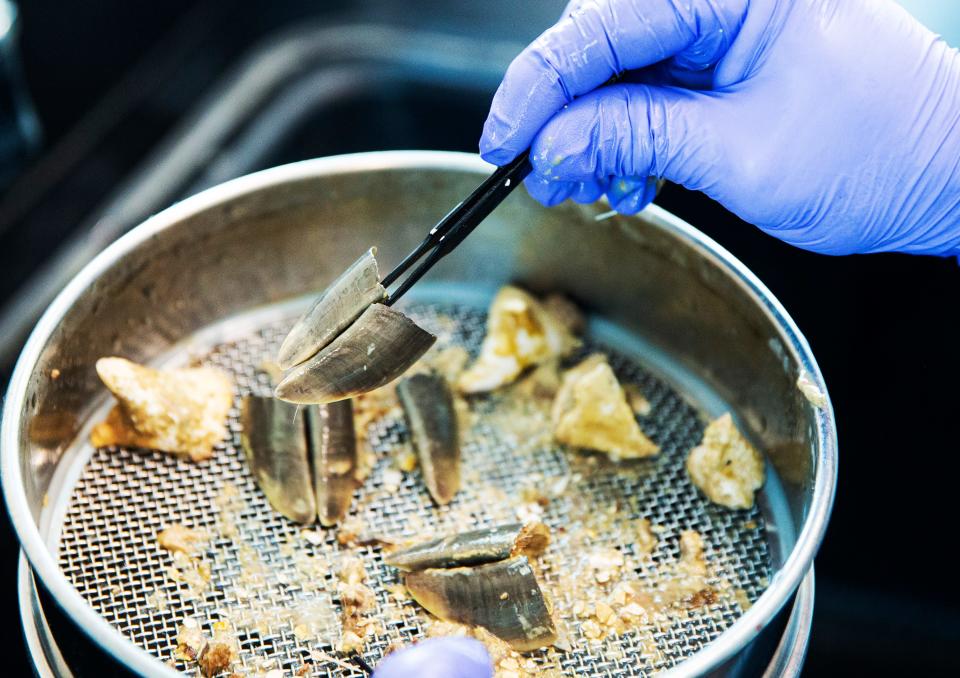
Panthers already have major hurdles to cross before being removed from the Endangered Species List, adding an invasive apex predator that competes with and likely feeds on them is a completely different challenge.
Panthers leave their kittens basically just sitting on the ground, maybe in a bush or thicket of brush.
Burmese pythons like the one being looked at on this day represent years of consuming native wildlife.
A chart commonly found in python laboratories shows a pyramid of animals that would need to be eaten for a Burmese python to reach adulthood.
The listed imagery includes a white-tailed deer, two alligators, four raccoons, five ducks, 12 oppossums and dozens of rabbits, wading birds, mice and rats.
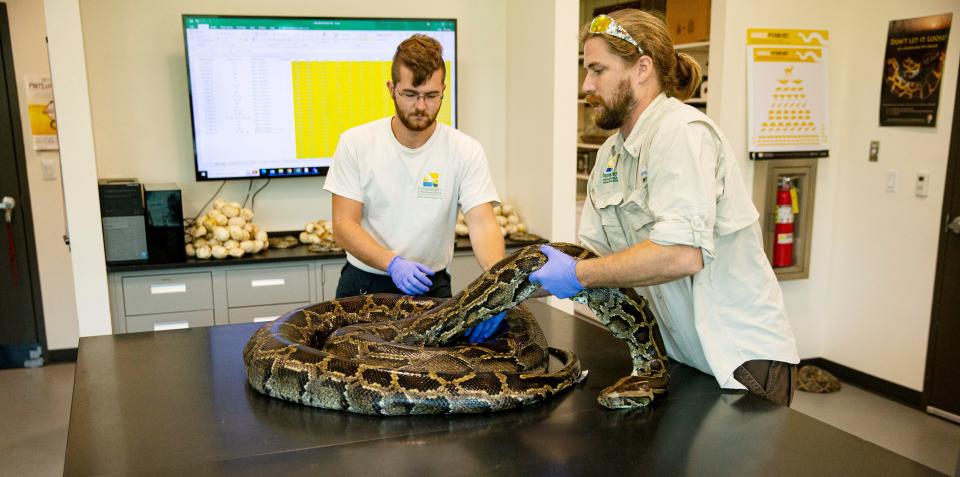
If one snake can eat that much native wildlife in a few years, imagine what untold numbers of Burmese pythons are doing to South Florida's native critters.
The lab work is designed to better understand how the snakes are impacting native wildlife, so scientists aren't typically interested in figures other than size, sex, number of eggs and an estimated age.
They're not really concerned about python health factors, other than whether a health issue or parasite is transmitted to native species.
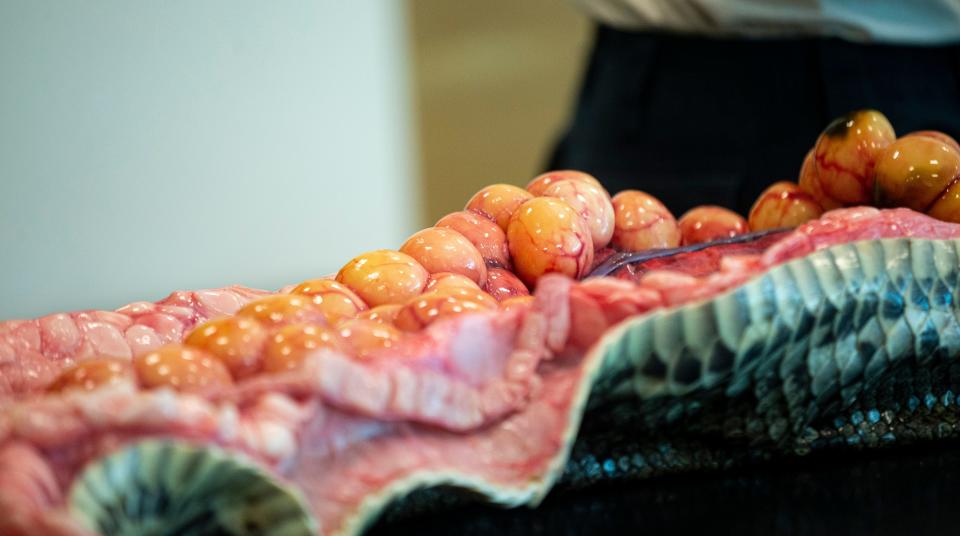
"Our necropsies and just guts and gonads," Easterling said. "We're not weighing the kidneys and checking the liver. We're going to check for genetic samples, we check the lungs for parasites, we count the number of egg follicles and then we're going to extract the fecal matter from the intestines. What we're most interested in is cutting them open, getting the data and then on to the next one."
This female is full of eggs, 69 of them.
"She's got to gestate them a little bit and then she sits on them and keeps them warm and guards them for two months, until they hatch," Easterling said. "She actually physically shivers to keep their temperature between 89 and 91 degrees."
Females can produce 100 or more eggs several times in their lives. At least 90% of those eggs will hatch, which means the young have a relatively high survival rate during this stage of life. "This is why we're on the assignment," Bartoszek said.
Connect with this reporter: Chad Gillis on Facebook.
This article originally appeared on Fort Myers News-Press: 'Guts and gonads' necropsy produces 69 Burmese python eggs, deer hooves

